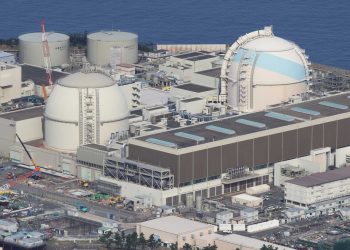Agence France-Presse,
The UN atomic agency thinks Iran could have 8,000 centrifuges enriching uranium by December, a significant rise in nuclear capability likely to fuel fears that Tehran seeks nuclear weapons, diplomats said Tuesday.
“The concern is that they will have a sensitive number of centrifuges without having resolved the question marks surrounding the history of Iran's programme,” a diplomat close to the watchdog International Atomic Energy Agency (IAEA) said.
“It becomes more sensitive the more they have. It becomes a greater proliferation concern,” the diplomat told AFP.
The diplomat said IAEA chief Mohamed ElBaradei has been telling political leaders in private conversations that Iran was making “steady progress” in uranium enrichment and shows no sign of slowing down.
“ElBaradei is saying that Iran will have 8,000 centrifuges running if the current pace (of installation) continues” at its enrichment plant in Natanz, the diplomat said, adding that, from a proliferation point of view, ElBaradei was becoming “increasingly concerned.”
ElBaradei had Monday told an IAEA meeting here that the “brewing confrontation” with Iran over its atomic ambitions “must be defused.”
ElBaradei said “dialogue and diplomacy are ultimately the only way to achieve the negotiated solution foreseen in the relevant Security Council resolutions.”
The UN Security Council has imposed two rounds of sanctions to get Iran to completely halt uranium enrichment, which makes nuclear reactor fuel but also atom bomb material, and to provide information about suspect nuclear activities.
The IAEA has after more than four years of investigation failed to resolve key questions about Iran's nuclear programme.
Tehran vehemently denies US accusations that it seeks nuclear weapons, saying it wants only to generate electricity.
Washington says it seeks a diplomatic solution but has not ruled out military action.
The diplomat said Iran was increasing its enrichment capability without the IAEA having the inspection regime in place that is needed to monitor Tehran's atomic work.
Iran had, as of May 13, over 1,300 centrifuges enriching uranium at the underground, heavily bunkered facility in Natanz, according to ElBaradei.
Iran could reach its goal of industrial scale production with 3,000 centrifuges running by the end of June, a senior official close to the IAEA said.
That number could make enough enriched uranium for a bomb in less than a year, experts say.
A second diplomat close to the IAEA said ElBaradei's estimate of Iran obtaining 8,000 centrifuges was based on “the technical assessment of his inspectors” and so was sound.
But Gary Samore, a New-York-based non-proliferation analyst, struck a note of caution.
He told AFP that “whatever the number of centrifuges Iran is running, the question is performance and in particular whether the machines are capable of operating at high velocities for a long period of time without a high failure rate.”
Samore said the “everybody, including our friends in Israel, seems to be pretty relaxed and feel that what Iran has working is not very significant because of the question of performance.”
But he said the United States might be playing down Iran's technological prowess since it “has decided that it doesn't want a crisis with Iran right now” due to its military problems in Iraq.
But the diplomat said the United States and other nations are “are fooling themselves about Iran's nuclear capabilities. They are in a state of denial.”
The diplomat said “Iran's nuclear capability clearly shows that the only way to resolve this issue is direct negotiation.”
ElBaradei has said the West should accept that Iran has acquired the knowledge to enrich and that it is unrealistic to expect it to halt this work entirely.
But US Secretary of State Condoleezza Rice has accused ElBaradei of “muddying the message” from the international community that Iran must abandon all enrichment activities.









